K-fashion, a matter of design, creative education, digital and sustainable challenges
- Jiseon Lee
- Aug 19
- 11 min read
Updated: Aug 22
A cross-cultural conversation with Laetitia Barbu, ESeul Yoon and Anne-Charlotte Hartmann-Bragard (Moderated by Laetitia Barbu)
In 2022, Paris-based designer Laetitia Barbu and Busan, Korea-based designer ESeul Yoon got in touch to discuss their common work as designers on sustainable fashion and the education of future generations, but also the bilateral influence in this area between Korea and France like France and Korea through the Korean wave and brands. At the dawn of collaborative projects that they are currently setting up, they join here with Anne-Charlotte Hartmann, consultant in image and communication strategy with whom Laetitia collaborates, to discuss the current panorama of the French, European and Korean fashion design and textile sector as well as the challenges ahead, from the point of view of both production, purchasing and usage behavior, from the earliest age.
Since we have been collaborating, what similarities or differences have you noticed in our joint and respective activities in the sector of textiles, clothing, and fashion related to sustainability?
Laetitia: The textile and fashion industry are one of the top 3 largest polluters in the world, just after the oil industry. France is among the European countries that are sensitive and active on the themes of sustainable development and the environment. Many initiatives are being implemented today around textiles, clothing, and fashion.
Anne-Charlotte: Yes, we can mention the Circular fashion federation (Fédération de la mode circulaire) of which Studio Abi (studio that I founded) is a member, and Paris Good Fashion, among others. New consumption models must be invented and our relationship with clothing must be reevaluated. It is about creating value other than in the traditional framework of producing goods. Through traceability, data collection and analysis tools, new repair and upcycling services. Imagine a more creative and more ecological fashion of tomorrow.
Laetitia: A particularly complex shift to take for the industry but also the consumer. What about South Korea?
ESeul: Korea is also active in sustainable development and environmental issues, indeed. For example, textiles made from Hanji, a unique Korean know-how, are also particularly studied (Korean Institute of Convergence Textile and Hanji Industry Support Center) and associated with fashion design. Hanji is a traditional Korean paper made from the bark of the mulberry tree that is still made by hand in Jeonju. The Jeonju Hanji Fashion Design Competition highlights this material, and I had the honor of receiving the Gold prize and Special prize during this competition in 2018.


It’s about creating fibers that are beneficial to the environment and biodegradable. Many Korean companies already offer clothing made from Hanji fibers, but consumers have not yet integrated these textiles and products into their consumption habits because it is a fairly new fiber. Paradoxically, certain clothes made from Hanji fibers once dressed Koreans for several centuries.
How to preserve know-how (savoir-faire) and its transmission? Is innovation in these sectors able to foster sustainability?
Laetitia: The question of savoir-faire of “national collective memory”, their preservation, the transmission and training of young people, restructuring, and innovation are also current issues that are particularly considered. This know-how of excellence offers high-quality sustainable alternatives and innovation potential that are particularly sought after today.
Restructuring and innovation partly involve the ability to introduce technological and digital tools to modernize production processes, while preserving high quality in production. These systems aim to make certain creative and artisanal activities more sustainable and limit their disappearance, in line, in the case of France, with national and European directives concerning the Creative and Cultural Industries (CCIs). The main technological resources concern 3D design and visualization, virtual representations, and haptic design. Artificial Intelligence will also have a significant impact, as in the case of other CCIs, in particular through the creation of model libraries to facilitate the work of designers. But the question is also what the designers themselves will do with this tool through their practice and how they will make it evolve.

Anne-Charlotte: Moreover, in particular for the orientation and training of young people, an essential subject for the sustainability of these activities, the Comité Colbert has set up the event: ‘Les de(ux)mains du luxe’ (The two hands of luxury/The tomorrows of luxury) in Paris in December 2023. For the question of the intersection of innovation and know-how, a unifying example is the 19M founded by Chanel, a place of creation and transmission of artistic crafts hosting, among others, Atelier Montex (embroidery) which develops creative projects around know-how and technological innovations with Studio MTX (architectural embroidery), but also organizing cultural mediation actions for young audiences and amateurs.
ESeul: In Korea, it starts rather with significant research conducted around the fibers that we will use through our fashion design activities, and we want to be able to create these designs with fibers that are good for the environment rather than ordinary fibers. In this way, I think that if we direct our design work towards different alternatives, instead of remaining on a single model, designers as well as future professionals in the sector will be better trained on these subjects and this will promote the emergence of more innovative and sustainable ideas.
But just as in France, there are a set of limitations, such as the replacement of the manual work of artisans by expensive machines when it comes to increasing the production capacity of Hanji paper fabric for example. Young people are also losing interest in these professions and know-how because they don't see any future prospects there. Korean designers have a key role to play in their commitment to sustainability. They are able to influence consumer mentalities, especially the younger generations.
3D visualization of students' creations, supplemented by the use of AI to complete missing or invisible parts of the prototypes. Initial creations used natural and sustainable materials such as red onion and orange peels, and paper mulberry (Korean Hanji paper). European BLISS LLab project supported by the EU Creative Flip program
ⓒBLISS LLab
What images are reflected by fashion and luxury in France and South Korea and encourage exchanges between the two countries, particularly through the "Korean wave" (Hallyu)?
Laetitia: French luxury and creation are very well known globally, particularly in East Asia and Korea. French luxury makes an average of 86% of its turnover from exports. It has shaped a certain image of France seen from abroad which in fact affects the French population in very diverse ways. Luxury brands are reinventing themselves and wish to reach a certain youth who are very aware of trends and digital 'mix-media' experiences.
Anne-Charlotte: The question of luxury is currently being addressed both through the prism of consumption, obviously, with the challenge of capturing a younger clientele thanks to a generation of houses that are questioning and renewing traditional codes, such as Jacquemus, Marine Serre, Coperni, and Ami, and who are also contributing to France's appeal, off the beaten track of the biggest brands; but also, through the prism of preserving and passing on know-how.
Through education and the role it plays, we realize that luxury is not just a question of economic attractiveness but more broadly, a vision of society in which artistic craftsmanship and, more specifically, the 'little hands' who hold the know-how and thanks to whom it is preserved, are passed on and even transformed, are part of a powerful imagination that feeds soft power beyond national borders and encourages intercultural dialogue.
ESeul: In Korea, French luxury brands are highly recognized. Accessories and bags, in particular, are popular choices for gifting to colleagues or family due to their moderate price points. For instance, even for Jacquemus, it's primarily their bags that have gained significant popularity, as evidenced by the success of their 2023 pop-up café-store in Seoul, which was designed in the shape of one of their iconic bags.
Laetitia: These brands partner with Korean productions or artists in order to gain visibility and strengthen this image globally, thus riding the Korean wave. The creations and products are very present in films, Korean dramas, and among K-pop groups. The most famous French haute couture brands create tailor-made suits and make Korean artists their ambassadors, with global events in Seoul and East Asia such as the fashion shows in Korea: Louis Vuitton in 2022 with K-pop group BTS and in 2023 staged by the director of Squid Game Hwang Dong-Hyuk. The slow introduction of second-hand luxury products also makes it possible to reach customers with lower purchasing power, particularly young people.
ESeul: Many Korean clothing brands are also used in K-dramas and K-pop, which contributes to the influence of K-fashion outside Korea and makes it increasingly visible and known on the international scene. In Korean fashion, there are many models that emphasize comfort and practical “daily wear”, but also models that dare a much more creative approach or revisit traditional models like the Hanbok more and more. When the creator is Korean, it brings a more Korean atmosphere to the productions which is also recognized and appreciated by foreign consumers.
Laetitia: And I think this is what makes Korea's cultural products so specific and part of their appeal, various influences revisited with this particular Korean touch. Today it is a system of dual influence and a dialogue that has become bilateral between France and Korea/Korea and France and even much more widely in Europe and beyond.
I also recently saw that several Korean tech start-ups, using AI, AR, and VR, are turning to sustainable alternatives such as the maintenance and repair of clothing and fashion accessories, the resale of these products in a more circular perspective (giving a second life to clothing), or even for online purchases, limit the number of product returns by customers due to size errors and thus reduce the round-trip transportation of these products.
ESeul: Speaking of virtual, digital fashion is emerging as well in Korea through the accelerated development of new technologies combined, for example, with K-pop and the virtual representation of idols and avatars.
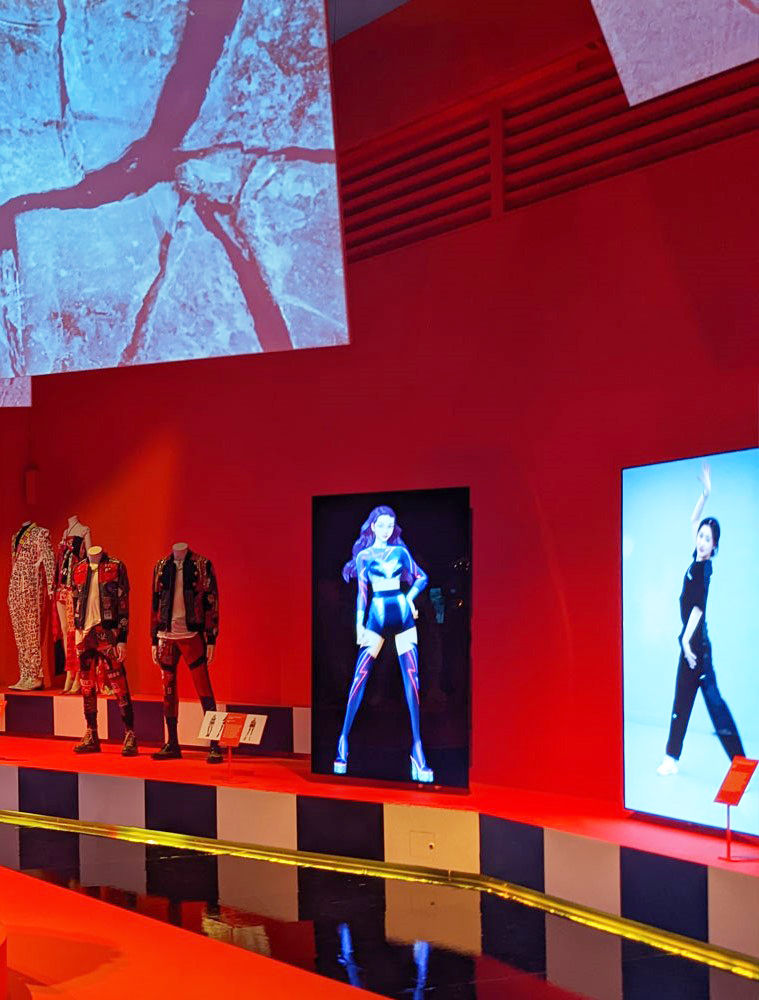
How early education and training, from young people to high school students, can provide answers to the challenges of creativity, innovation, and gender in these sectors?
Laetitia: As ESeul suggested through the role of Korean designers, bringing textiles and clothing to the forefront, through education, towards the youngest and not only future professionals in this sector, reminds us that they are much more than material elements of everyday life and that they have a lot to tell us. Textiles and clothing are major cultural markers. They are also a second skin, defining our identities and we develop an intimate relationship with them.
Students working on a prototype of an enlargeable garment made from folded Korean Hanji paper, as part of the European BLISS LLab project supported by the EU Creative Flip program ⓒBLISS LLab
What we call “future skills” are important to consider in this curriculum for a future that is already here. In the era of the so-called fourth industrial revolution, they bring together approaches that have been little considered until now, such as the importance that the development of creative thinking, critical thinking, and problem-solving will take on in the era of AI and automation as well as sustainability challenges (creative education and cultural learning), but also social-emotional intelligence (empathy, cooperation, and conflict resolution).
Anne-Charlotte: And these "future skills" begin to develop in early childhood, a particularly propitious period for the most fundamental learning and the formation of a relationship with our environment. Playing with fabric and clothing, as well as mobility through, for example, sensory textile installations, are particularly beneficial approaches for fostering the learning of fine motor skills, but also language, curiosity, creativity, and imagination.
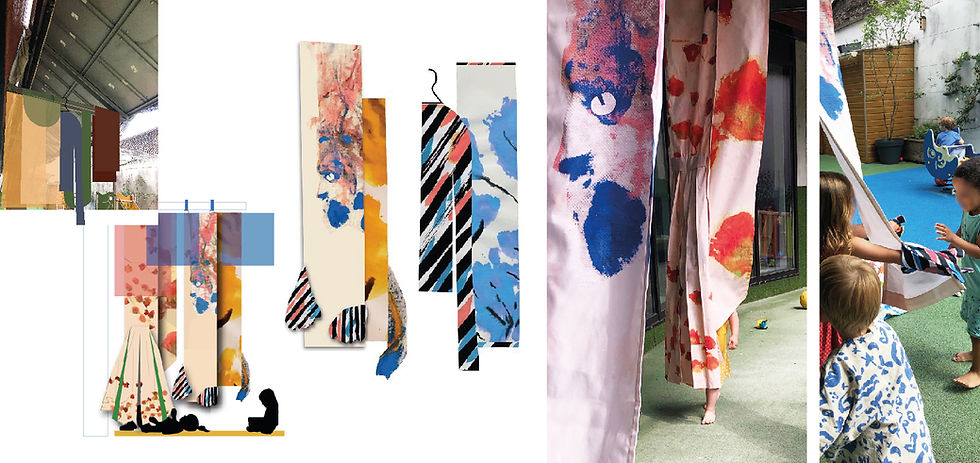
ESeul: With my students, we dyed our own Hanji textiles and held design classes. These courses help students, both boys and girls, to think about their future direction and professional career by discovering the professions of fashion designers and stylists. They also allow them to be aware of creation but also of style, beyond their Korean models also from K-pop and dramas, with a complementary opening towards international fashion.Once adults, it is general knowledge and practical experiences that will serve them, even if they do not pursue their careers in this sector.

Laetitia: Workshops can be developed for older children and teenagers, addressing the themes of creation, styling, gender, and how identities are formed and influenced by the cultural content consumed by young people.
Korean productions are very popular with global distribution. They now have an impact on the way young people dream and construct themselves in Korea and around the world. These are intersectoral and mixed-media approaches, where fashion, beauty, film, music, and technology are decompartmentalized sectors. The style and costumes of K-pop groups or Korean actors-actresses are particularly noticed and are an essential component to the success of these productions. Some of these costumes, with androgynous aesthetics, also play a lot in gender issues and the redefinition of identities, particularly in K-pop, like for example the blouses and skirt suits worn by certain members of BTS (Korean designers Ordinary People and Jay Baek as well as Louis Vuitton).

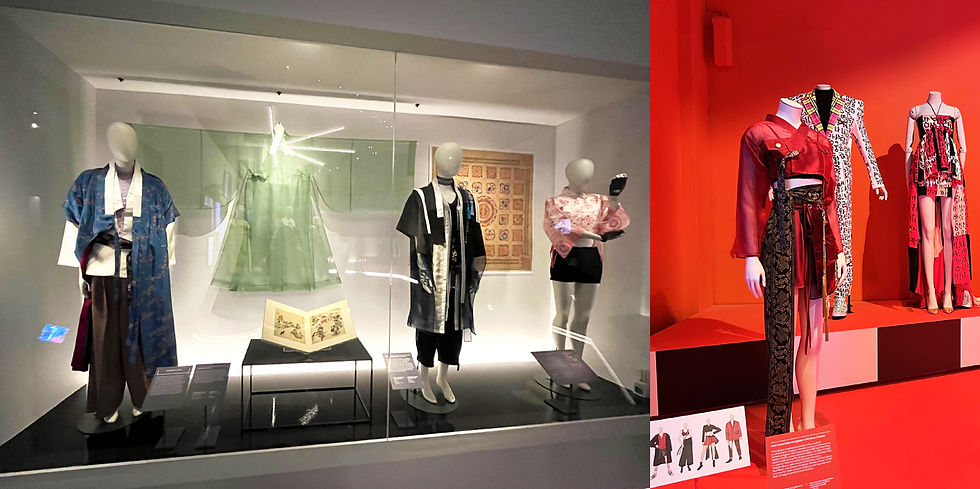
From a more professional point of view, fashion and design are, of course, significantly impacted by current challenges, and this has significant repercussions on the way younger generations are trained in these professions. Sustainability, the digital, identities, and co-creation become essential subjects when we approach these sectors. Textiles can today become immaterial through haptic design, clothes are created with dedicated 3D software and can be tried virtually via apps, fashion shows are becoming virtual, brands and fashion weeks are questioning their impact in the post-COVID era.
ESeul: Yes, and despite the competition that exists in this sector, important avenues of development are enabled, such as the association of the world of fashion with technology. Though I don't think we're at the stage where we really learn it in school yet, digital design and AI are mostly being used in fashion by large companies. Technology is well studied, but it seems that the application stage is still in progress.
About the Authors
Laetitia Barbu
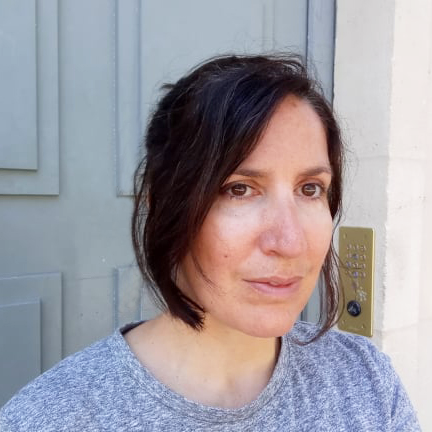
Laetitia Barbu is a designer, artistic director, and design researcher (Paris, France). She is the founder of Ark-Ellia Design and co-founder of Illustrious Lab and EU BLISS LLab (Bridging Learning in Sustainable Styles). Board member of the GIS ACORSO - IN2FROCC facilitating group (International and interdisciplinary network for research on children and clothing).
Co-coordinator of the Designing for Children’s Rights Paris Local chapter.
She has contributed for several years to European projects, in charge of the development of sustainable strategies in the cultural heritage sector; is conducting creative projects linked to innovation, sustainability, and social change exploring new immersive ways to connect and engage, based on smart clothing using augmented reality. Laetitia has taken part in interdisciplinary and international research projects.
ESeul Yoon

ESeul Yoon is a Fashion coordinator-creative director for several international brands, including the UK brand Stella McCartney, and a fashion and styling teacher in primary and middle schools (Busan, South Korea). In 2015, ESeul Yoon graduated from the Chambre syndicale de la couture parisienne (Parisian Couture Union Chamber) and FIC Fashion Institute in Busan. She has lived in France during her studies. She has received several awards in South Korea such as the (2018) 7th Hanji Fashion and Textile Design Competition, the Gold Prize (Director of Jeaollabuk-do local office), and Special prize. ECO Fusion Fiber Research Institute.
Anne-Charlotte Hartmann-Bragard
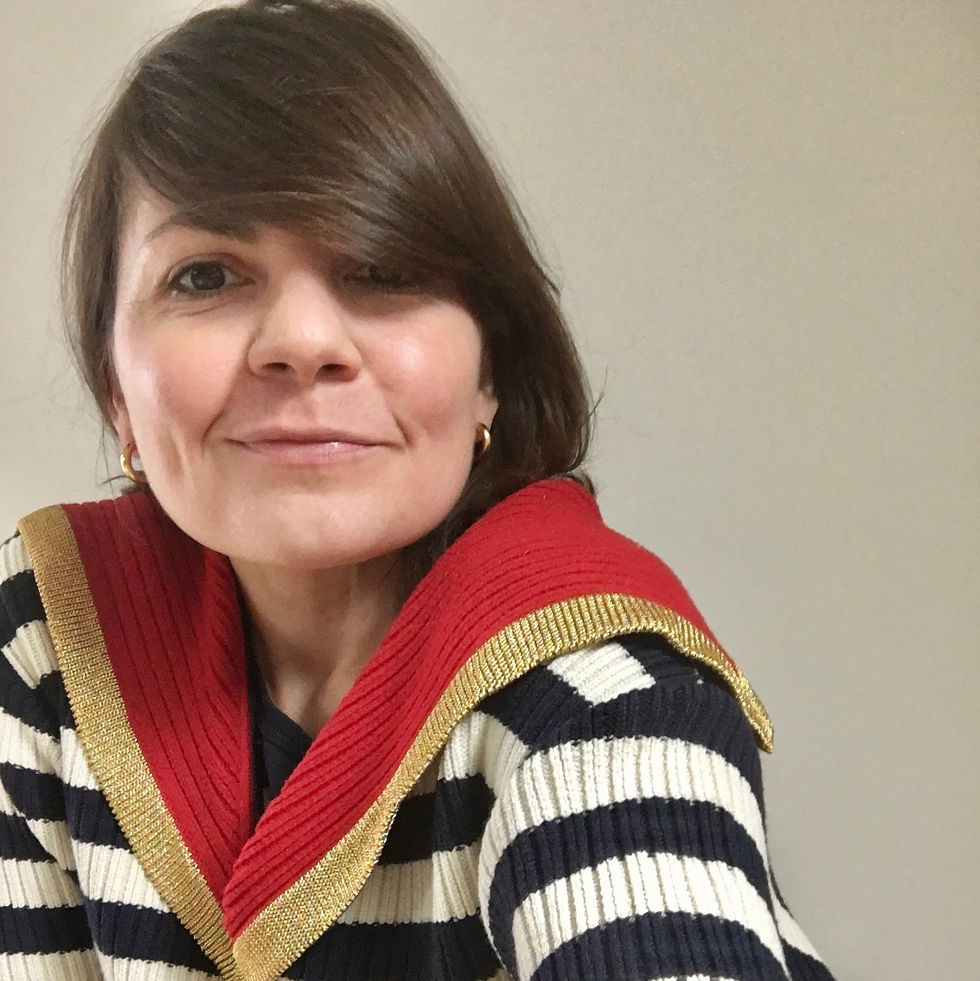
Anne-Charlotte Hartmann-Bragard has a degree in Political Science from the University of Paris I Panthéon-Sorbonne and is an independent consultant in image and communication strategy for cultural heritage companies and cultural institutions (Paris, France). She worked for ten years in brand design agencies. She has supported historic players in the luxury and fashion sector such as Hermès, Elsa Schiaparelli, Roger Vivier but also multidisciplinary artist collectives throughout France and even start-ups in the creative industry. She has been a jury at the Estienne school (Paris) for the Higher Diploma in Applied Arts - Design with a graphic design focus for 8 years and lectures at the Institut Français de la Mode as part of the IFM-Kering Sustainability Chair.
She founded Studio Abi in 2020, an association whose aim is the development and promotion of textile education, thus encouraging and supporting children to be actors in their development and discover the world through the “magical” dimension of fabrics, but also to make them aware of the challenges of the textile industry so that this generation can be the most capable of creating a new ecological, creative and inclusive paradigm.















The Cafe Racer Jacket collection is a dream for every biker sleek, tough, and full of attitude. A timeless piece for any wardrobe!